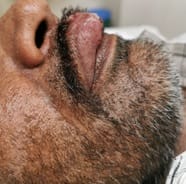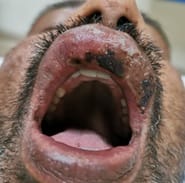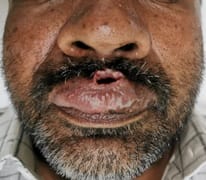From allergy to labial abscess following a bee sting: A Case report
Brunda M S1*, Padmini S N2, D. Shetty C.3, Treesa MD.4, Sainath A.5
DOI: https://doi.org/10.17511/ijmrr.2020.i03.09
1* Brunda M S, Consultant, Department of Internal Medicine, Aster CMI Hospital, Bangalore, Karnataka, India.
2 Padmini S N, Specialist, Department of Internal Medicine, Aster CMI Hospital, Bangalore, Karnataka, India.
3 Chaithanya D. Shetty, Junior Resident, Department of Internal Medicine, Aster CMI Hospital, Bangalore, Karnataka, India.
4 Treesa MD, Junior Resident, Department of Internal Medicine, Aster CMI Hospital, Bangalore, Karnataka, India.
5 A. Shannumukha Sainath, Resident, Department of Clinical Pharmacy, Aster CMI Hospital, Bangalore, Karnataka, India.
Arthropod bites are a common problem worldwide that are capable of inflicting injury, inciting allergic reactions, and transmitting systemic disease. Members of the Hymenoptera order in particular are of importance as they are nearly ubiquitous in nature and few such as bees, are also used for commercial purposes. These insects have stinging apparatus that deliver venom to the affected tissues during a bite. Hymenopteran venoms contain a mixture of proteins, peptides, and small organic molecules that produce varied effects. Stings from bees, wasps, and ants produce a wide array of clinical manifestations that can be local or systemic. Additionally, these stings may cause life-threatening allergic reactions. Anaphylaxis following a Hymenoptera sting is the most common serious systemic complication. Local reactions can be immediate or delayed. In a few instances, local or disseminated infections have also been reported following bee stings; although very rarely have proved fatal in severe cases. Infection rates are found to be higher in immunodeficiency states. Infections at site of a bee sting can result in the localized pustular lesion with peripheral induration or in severe cases deep necrotizing fascia infection with sepsis and multisystem organ failure. Here we report a case of a bee sting in the upper lip leading to the painful swelling with abscess formation successfully treated with antibiotics, incision, and drainage. Numerous mechanisms for infection in arthropod stings have been described; in our case report, we would like to highlight the importance of timely identification and appropriate management of the infections that may have a significant impact on the overall outcome.
Keywords: Hymenoptera, Bee sting, Anaphylaxis reactions
| Corresponding Author | How to Cite this Article | To Browse |
|---|---|---|
| , Consultant, Department of Internal Medicine, Aster CMI Hospital, Bangalore, Karnataka, India. Email: |
Brunda M S, Padmini S N, Chaithanya D S, Treesa MD, Shannumukha A S. From allergy to labial abscess following a bee sting: A Case report. Int J Med Res Rev. 2020;8(3):269-272. Available From https://ijmrr.medresearch.in/index.php/ijmrr/article/view/1145 |


 ©
© 

